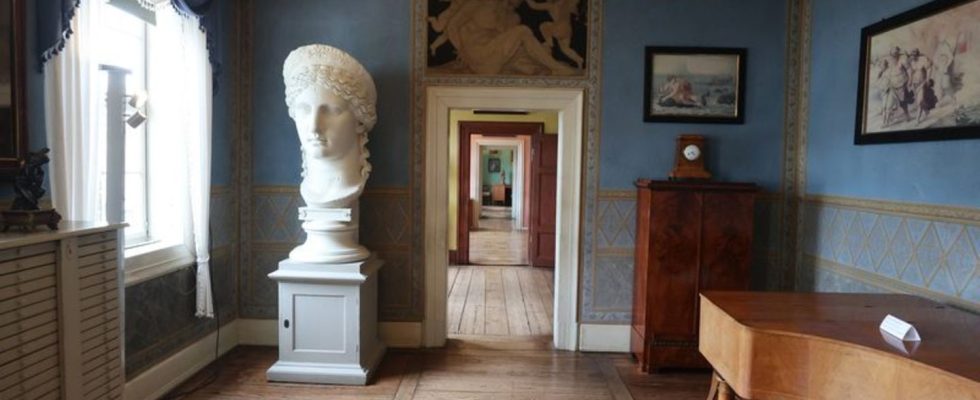UNESCO world heritage
Renovation of Goethe’s home: That’s the plan
View into the rooms of the Goethe House in Weimar. photo
© Bodo Schackow/dpa
It is perhaps the most important literary monument in Germany, so money and effort should be invested in the renovation of Goethe’s home. The goal: more Goethe, less projection.
With the planned multi-million dollar renovation of Goethe’s home in Weimar, a lot of things are expected to change in the important historical building. “It’s about uncovering more of Goethe and making visible what others have changed there,” said the President of the Klassik Stiftung Weimar, Ulrike Lorenz. The poet’s home, which is a UNESCO World Heritage Site Johann Wolfgang von Goethe (1749-1832) is a property owned by the foundation.
With around 100,000 visitors a year, the Haus am Frauenplan is the foundation’s most visited. School classes in particular are among the guests. But people from all over the world also make a pilgrimage there to see the “Faust” author’s original study or the famous view of the suite of rooms from the Great Collection Room to the Urbino Room itself. The iconic view and the study will hardly change, explained Petra Lutz, who is responsible for the poets’ houses.
What will be changed?
The house should be as barrier-free as possible and an elevator should be installed in an adjacent building. Technical systems should be modernized. “Some of the heating is still from 1913,” says Lorenz. The ground floor is to be converted and opened to visitors.
The attic, where Goethe’s son August once lived with his family, is to be made accessible. The importance of the garden should be highlighted. Not only did vegetables grow there, Goethe also used it for experiments. The poet was also interested in science.
This is reflected in his collection: he had collected a good 50,000 art objects and scientific objects in the house. Not everything can still be seen there today. The aim of the redesign is also to give the collection more space, says Lutz. Books should also return to the library room.
Make changes transparent
Many details need to be clarified so that “more Goethe” can be seen in the house again, explained Lutz. Changes were made over generations after Goethe. These layers would have to be removed and exposed.
It starts with the color of the walls, goes through the hanging of pictures and the disclosure of what has simply not been passed down. “We know almost nothing about some corners of the house,” admitted Lutz. “We have to be transparent and make it clear what Goethe’s was and what was not.”
In the future, it should also be made clear that Goethe did not live alone in the complicated house. “His family was there, the secretaries, he received a lot of guests, there was a lot of activity,” said Lutz. Goethe constantly received or sent letters and packages. The house was a network node, a laboratory, a workshop, said foundation president Lorenz.
The Schedule
Construction work is scheduled to begin in spring 2026. They are expected to cost 35 million euros, plus 10 million for the new museum design. The money should come from the federal and state governments. Millions more are on the horizon from foundations, companies and private donors, says Lorenz.
There will be more digital offerings during the closure period and the Goethe National Museum will continue to be used. According to Lutz, it is not yet possible to say exactly how long the house will have to be closed for the work. The work is expected to be completed before March 22, 2032. Because then the date of Goethe’s death will be 200 years old.

